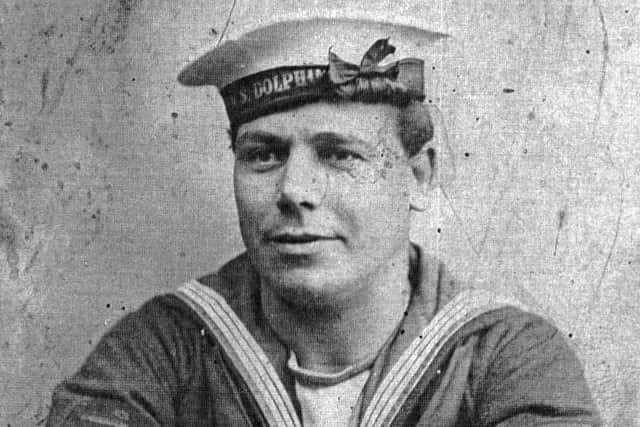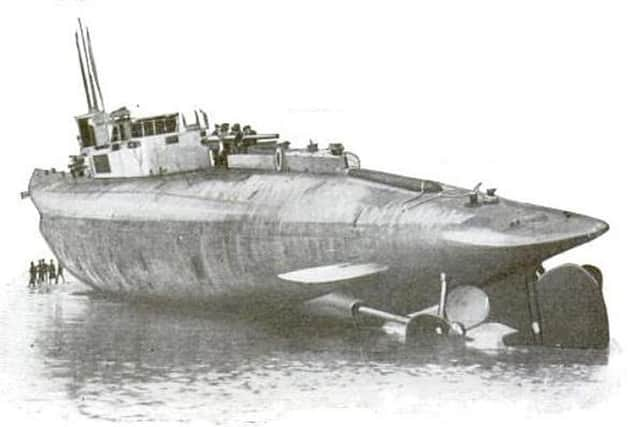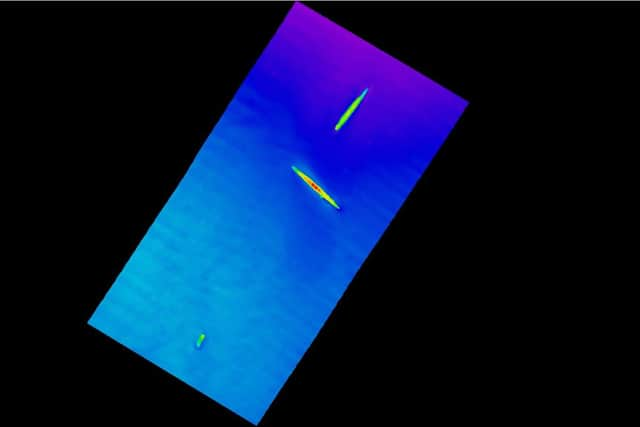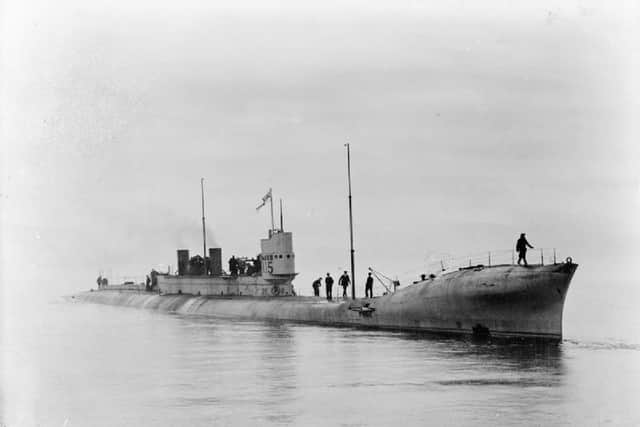Lost piece of submarine sheds new light on Battle of May disaster


The Battle of May Island on January 31, 1918, did not involve enemy action but was a cascade of blunders that unfolded as two flotillas of K-Class submarines and accompanying battleships departed for an exercise off Orkney.
On a misty night with minimum navigational light, two submarines collided after evasive action was taken to avoid lights in the water, possibly from a minesweeping operation by trawlermen off the coast of Fife.
Advertisement
Hide AdAdvertisement
Hide AdAs communication about the emergency faltered, four further collisions took place among the naval vessels with 104 men killed within 90 minutes of leaving Rosyth.


Now, a high-definition survey of the seabed has revealed new details about the wrecks of two submarines, the K-4 and the K-17, both which rapidly sank after being struck by sister vessels in the chaos of the night.
Crucially, a third piece of wreck has been pinpointed – the lost piece of the K-4, which was effectively sliced in two by another submarine killing all 55 men on board.
The exact whereabouts of the 18-metre stretch of vessel has never before been confirmed with new analysis of the piece of wreckage showing it lies around 500 metres from the rest of the submarine.
Ben Saunders, senior marine archaeologist from Wessex Archaeology, said: "The high definition survey has allowed us to have a close look at the wrecks and we have been able to see the extent of the damage for the first time.


“It was never definitely known until now that there was a third piece of wreck.
“Now we can see such a clear demonstration of the submarine in two pieces and we are able to identify where the cut was.
“You can see how the K-4 sank and you can start to build up a real picture of what happened that night.”
Advertisement
Hide AdAdvertisement
Hide AdIt is now known the K4 was struck in front of the conning tower – which holds the periscope – with the “oval shape” of the colliding submarine’s front profile left embedded in its wreckage.


Meanwhile, analysis of the wreck of K-17, which was rammed by HMS Fearless as vessels rushed to help each other, has been combined with the testimony of submariner Fred Bown, one of only seven of the 57-strong crew to survive the night, to illustrate events in the Firth of Forth.
The lower bow of HMS Fearless scraped across the deck of K-17, partially ripping off the conning tower and possibly the AA gun and leaving the control room and beam torpedo room open to flooding.
According to the account from Bown, a highly decorated submariner from Dorset who was awarded the George Medal and the Russian George Cross, the aft hatch was blown open in the minutes following the sinking. The funnel hatches and mushroom vents were also partially open given the submarine had been running on the surface.
Mr Saunders said: “It is clear from new evidence that there were several areas of damage and there was no way to save the vessel.
Most managed to escape the stricken vessel, but were killed as destroyers cut through the waters where they waited for help.
Mr Saunders added: “The combination of all of these holes meant that K17 was doomed. However, her crew had managed to escape the submarine, but due to the confusion, darkness and events unfolding around K4, they were not picked up before the destroyers escorting the battleships cut through the area.”
The geophysical survey of the wreck site was carried out by Neart na Gaoithe (NnG) Offshore Wind Limited, who are currently developing an offshore wind farm nearby.
Advertisement
Hide AdAdvertisement
Hide AdWessex Archaeology have been working for several years with the firm to ensure that any offshore archaeological material is either protected or fully recorded as the development progresses.
Veterans with the Breaking Ground project, which uses archaeology to support a new direction for servicemen and women, worked to piece together the survey results with their own knowledge of naval tactics and information held by the Fred Bown Archive. A descendant of the submariner works as a project manager with Wessex Archaeology team and was able to share the records.
The Battle of May Project followed on from the veteran’s work with the Aberlady X-Craft Project, funded by the National Lottery Community Fund, which pieced together the story of the two midget submarine wrecks on the Fife beach which were used for RAF target practice.
Mr Saunders said the results of the work on the Battle of May were keenly felt by both himself and the veterans.
He said: “I do a lot of work at sea and spend a lot of time on the water.
“It’s a very risky and dangerous place to be and its very cruel at the same time.
“When you look at the dive wreckage and the dive videos and then the personal accounts of what happened that night, it leaves a sense of coldness.
“The veterans feel it as well.”
Mr Saunders said one of the veterans on the project, who served the Falklands, described a seaman who never made it home as being "still on watch”.
Advertisement
Hide AdAdvertisement
Hide AdMr Saunders, in reference to the sinking of the K-4 and K-17, added: “These are two subs whose crew are eternally on patrol.
“These are young people in a war but this is not a battle, it is a night of complete chaos that led to a dreadful accident, that was potentially avoidable, and the death of over 100 men”.
A message from the Editor:Thank you for reading this article. We're more reliant on your support than ever as the shift in consumer habits brought about by Coronavirus impacts our advertisers.
If you haven't already, please consider supporting our trusted, fact-checked journalism by taking out a digital subscription.
Comments
Want to join the conversation? Please or to comment on this article.
